The ultimate guide to OSHA required training checklist
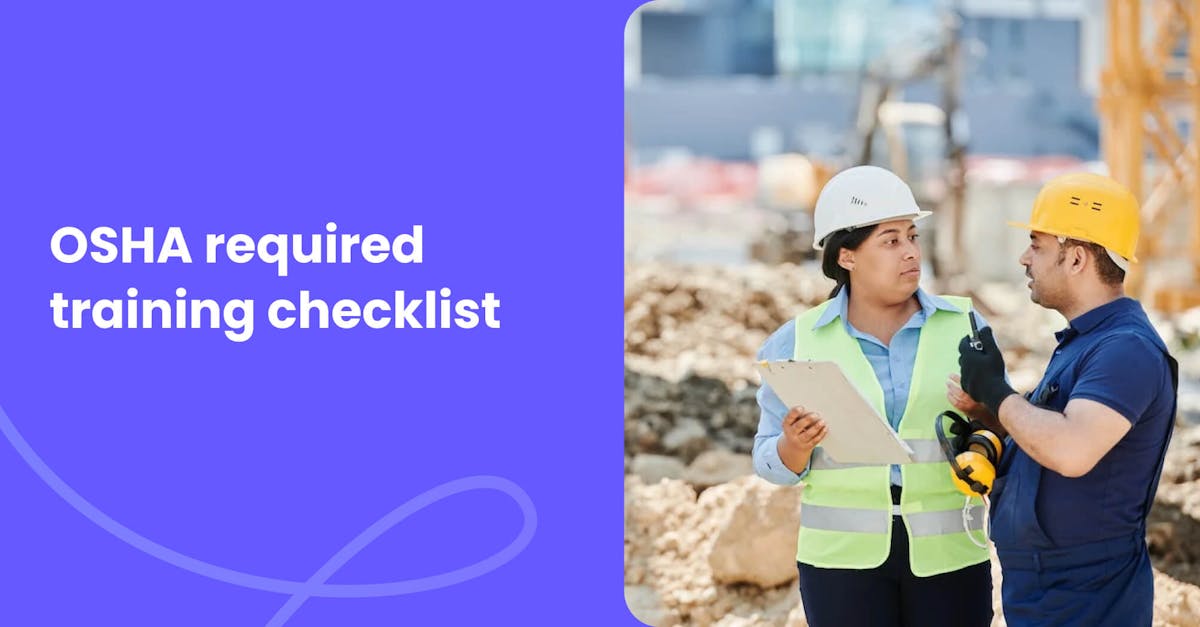
OSHA, the Occupational Safety and Health Administration, establishes and enforces standards to secure safe and healthy working conditions for employees of almost any industry. One of the key aspects of OSHA compliance is organizing the necessary training for employees.
This article includes some comprehensive OSHA required training checklists to guide you in meeting your obligations as an employer or training manager.
But first, let’s go over the vital importance of OSHA training.
OSHA Training: Why is it important?
OSHA training holds extreme importance in creating a safe and healthy work environment. It’s more than just a legal obligation – it’s a vital step toward preventing accidents, injuries, and occupational hazards.
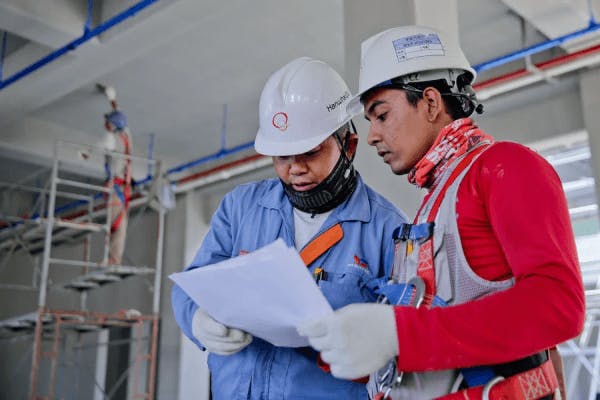
Here are some key reasons why OSHA training is crucial for you and your workers:
- Compliance with legal requirements - OSHA written programs secure compliance with federal and state regulations. Failure to give the required training can result in penalties, fines, and potential legal liabilities. By prioritizing OSHA training, you can demonstrate your commitment to workplace safety and avoid legal consequences.
- Accident prevention- OSHA training equips your team with the knowledge and skills to identify workplace hazards and take appropriate preventive measures. Whether it's recognizing potential dangers, understanding safety protocols, or utilizing personal protective equipment (PPE), trained employees are better prepared to prevent accidents and injuries.
- Enhanced safety awareness - OSHA educates your workers about the specific risks associated with their job tasks, the importance of maintaining a safe work environment, and the significance of following safety guidelines. This helps increase their safety awareness and fosters a culture of responsibility, reducing the likelihood of accidents.
- Reduced workers' compensation costs - Workplace accidents can lead to expensive workers' compensation claims, medical expenses, and lost productivity. OSHA training helps prevent accidents and injuries, reducing the financial burden on both employers and employees. By investing in training, your organization can save on insurance premiums and avoid the long-term costs associated with workplace incidents.
Conduct effective OSHA training with the best training platform today!
The ultimate guide to OSHA required training checklist
Below, you’ll find a list of common OSHA training requirements for each industry. Take note that your OSHA training should not be limited to these programs.
Plus, there are specific needs that may vary based on your industry regulations, the job roles of your staff, and your organizational size. Always consult OSHA guidelines and regulations for precise and up-to-date training requirements.

Industry: Construction
OSHA required training checklist:
- 10-Hour construction safety training
- 30-Hour construction safety training
- Electrical safety training
- Hazard communication
- Lockout/tagout
- Respiratory protection
- Fall protection
- Machine guarding
- Personal protective equipment (PPE) training
- Confined space entry
Industry: Healthcare
OSHA required training checklist:
- Bloodborne pathogens training
- Hazard communication training
- Hazardous materials handling training
- Emergency action plan training
- Ergonomics training
- Fire safety training
- Respiratory protection
- Personal protective equipment (PPE) training
Industry: Manufacturing
OSHA required training checklist:
- Hazard communication training
- Lockout/tagout training
- Machine guarding training
- Respiratory protection training
- Ergonomics training
- Electrical safety training
- Personal protective equipment (PPE) training
- Confined space entry training
- Hazardous materials training
Industry: Hospitality
OSHA required training checklist:
- Fire safety training
- Slip, trip, and fall prevention training
- Ergonomics training
- Food safety and sanitation training
- Emergency action plan training
Industry: General Industry
OSHA required training checklist:
- Hazard communication training
- Emergency action plan training
- Fire safety training
- Ergonomics training
- Electrical safety training
- Slip, trip, and fall prevention training
Understanding OSHA’s required training programs
This section explores specifics of the OSHA-required training that you may need to organize for your workers. We’ll discuss the importance of these training programs and outline the topics that should be included in your training.
10-hour construction safety training
The 10-hour construction safety training is designed for entry-level workers in the construction industry. It aims to instill a strong safety culture in construction workers, reducing the risk of workplace accidents. This training covers important construction safety topics, including fall protection, electrical hazards, scaffolding safety, and handling construction equipment.

- Who needs it: Newly hired construction workers, contractors, and subcontractors, project owners and more.
- Industries: Construction
30-hour construction safety training
The 30-hour construction safety training is targeted at supervisors and workers with safety responsibilities in the construction industry. This comprehensive training program covers advanced safety topics, such as hazard recognition, excavation safety, confined space entry, and crane operation safety. By completing this training, supervisors can effectively manage safety risks and foster a safety-conscious work environment.
- Who needs it: Project owners, general contractions, and construction supervisors, managers, and other personnel with supervisory roles.
- Industries: Construction
Hazard communication
Hazard communication (HazCom) training familiarizes workers with the proper labeling of chemicals, safety data sheets (SDS), and the use of personal protective equipment (PPE). It increases their awareness of the potential hazards associated with chemicals and the necessary precautions to mitigate these risks.

- Who needs it: Workers dealing with or are exposed to hazardous chemicals/substances, such as chemical handlers, laboratory and medical technicians, construction workers, warehouse staff, painters, environmental health and safety (EHS) officers, and more.
- Industries: Manufacturing, construction, laboratories, healthcare, janitorial services, etc.
Lockout/tagout
Lockout/tagout training covers the proper procedures for isolating energy sources to prevent unexpected equipment startup or release of stored energy. Workers are trained to follow specific steps to de-energize equipment, such as shutting off power sources, disconnecting electrical circuits, and blocking mechanical energy.
- Who needs it: Workers who service or maintain machinery or equipment, such as maintenance technicians or engineers, machine operators, electricians, industrial technicians, facility engineers, and more.
- Industries: Manufacturing, construction, utilities, maintenance, etc.
Respiratory protection
Respiratory protection training focuses on respiratory hazards present in the workplace and the correct use of respirators. By using this training, workers learn how to identify respiratory risks, select suitable respirators, conduct fit testing, and maintain respiratory equipment.
This OSHA safety training quick guide guarantees that your team can protect themselves from airborne contaminants and maintain good respiratory health.
- Who needs it: Workers who may be exposed to airborne contaminants or hazardous atmospheres, such as welders, painters, construction workers, healthcare workers, industrial workers, and more.
- Industries: Construction, manufacturing, healthcare, laboratories, painting, refineries, etc.
Fall protection
Fall protection training aims to prevent falls from heights, which is the leading cause of workplace injuries and fatalities. This training checklist educates high-risk employees on the proper use of fall protection systems, such as guardrails, safety harnesses, and lifelines. It also emphasizes the importance of inspecting fall protection equipment regularly to secure its effectiveness.
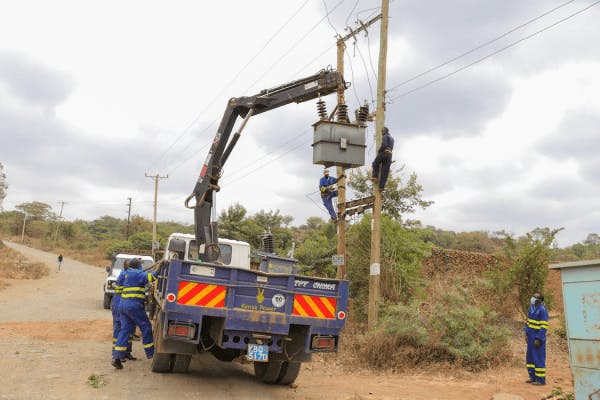
- Who needs it: Workers who work at heights or in areas with fall hazards, such as construction workers, roofers, window cleaners, tower climbers, bridge and structural workers, and more.
- Industries: Construction, roofing, utilities, telecommunications, maintenance, etc.
Fire safety
Fire safety training is designed to equip employees with the knowledge and skills necessary to prevent fires and effectively respond to fire emergencies. The main goal of this training is to minimize the potential risks associated with fires in the workplace and promote a safe working environment.
This training guide usually covers OSHA training topics such as fire prevention, evacuation procedures, and the proper use of fire extinguishers.
- Who needs it: All employees to prevent fires and respond to fire emergencies.
- Industries: All industries.
Machine guarding
Machine guarding training focuses on the safe operation and maintenance of machinery. Here, workers gain a deeper understanding of the hazards associated with moving machine parts and how to protect themselves from potential injuries. This training covers the importance of proper machine guarding, lockout/tagout procedures, and safe work practices when working with machinery.
- Who needs it: Employees who operate or maintain machinery or equipment, such as machine operators, maintenance technicians, wood and metal workers, manufacturing workers, warehouse workers, industrial engineers, and more.
- Industries: Manufacturing, woodworking, metalworking, packaging, etc.
Personal protective equipment (PPE)
Personal protective equipment or PPE is vital for safeguarding employees against workplace hazards. This training guide teaches employees on the proper selection, use, and maintenance of different PPE, including protective clothing, gloves, footwear, and headgear.
It emphasizes the importance of wearing appropriate PPE for specific tasks and gives insights into recognizing when PPE needs to be replaced or repaired.
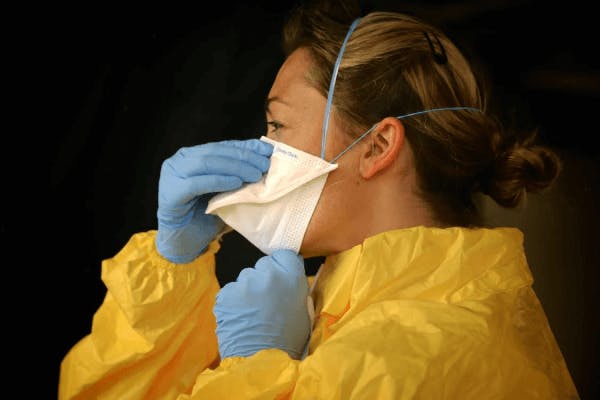
- Who needs it: Workers who need to use PPE as part of their job tasks, such as construction workers, healthcare workers, laboratory technicians, manufacturing workers, welders, and more.
- Industries: Construction, manufacturing, healthcare, laboratories, maintenance, etc.
Bloodborne pathogens
Bloodborne pathogens training goes over the risks associated with bloodborne pathogens, such as hepatitis B, hepatitis C, and HIV. It emphasizes proper infection control measures, safe handling of sharps, and the use of personal protective equipment to prevent exposure.
- Who needs it: Workers who may come into contact with blood or potentially infectious materials, such as healthcare workers, emergency responders, laboratory technicians, janitorial or custodial staff, tattoo artists and body piercers, and more.
- Industries: Healthcare, first responders, laboratories, janitorial services, tattoo parlors, etc.
Electrical safety
Electrical safety training covers safe work practices, lockout/tagout procedures, and the identification of electrical hazards. By understanding electrical safety protocols, workers will have the knowledge to prevent and avoid electrical shocks, burns, and other electrical accidents.

- Who needs it: Employees who work with or near electrical systems or equipment, such as electricians, maintenance technicians, engineers, construction workers, heating, ventilation, and air conditioning (HVAC) technicians.
- Industries: Construction, utilities, maintenance, manufacturing, telecommunications, etc.
Hazardous materials handling
Hazardous materials (HAZMAT) handling training focuses on the safe handling, storage, and disposal of hazardous substances to prevent accidents, spills, or exposures. It teaches workers on how to recognize hazardous materials, appropriate handling techniques, proper storage, safe disposal, waste management, and emergency response in case of accidents or spills.
- Who needs it: Workers who work with or may be exposed to hazardous substances in the workplace, such as chemical handlers, laboratory technicians, hazmat response teams, EHS officers, waste management workers, and more.
- Industries: Laboratories, healthcare facilities, janitorial services, manufacturing, chemical production, oil and gas, etc.
Confined space entry
Confined space entry training teaches your workers about the specific hazards typically found in confined spaces. These hazards include limited entry/exit points, poor ventilation, the presence of toxic substances, or the potential for engulfment. With this training guide, they’ll also be trained on proper procedures for safe entry, exit, and rescue from confined spaces.
- Who needs it: Employees who work in confined spaces or may be involved in rescue operations, such as confined space entry personnel, industrial maintenance technicians, rescue team members, construction workers, utility workers, and more.
- Industries: Construction, manufacturing, utilities, petrochemicals, wastewater treatment, etc.
Ergonomics
Ergonomics training zero in improving the workplace to prevent musculoskeletal disorders and improve overall well-being. Employees learn about ergonomically correct workstations, proper lifting techniques, and strategies to reduce physical strain. By implementing ergonomic principles, you can minimize workplace injuries and enhance employee comfort and productivity.

- Who needs it: Workers who perform tasks that involve repetitive motions or activities that may result in musculoskeletal disorders or discomfort. These workers include office workers, industrial workers, healthcare workers, warehouse workers, laboratory technicians, and more.
- Industries: Manufacturing, construction, healthcare, transportation, office-based professions, hospitality, retail, etc.
Emergency action plans
In the event of emergencies such as fires, natural disasters, or medical crises, employees must be well-prepared to respond swiftly and effectively. Emergency action plans training equips employees with the knowledge of evacuation procedures, emergency exits, assembly points, and the proper use of fire extinguishers. This training also includes first aid and CPR techniques to address medical emergencies.
- Who needs it: All employees to guarantee a coordinated response during emergencies.
- Industries: All industries.
Slip, trip, and fall prevention training
Slips, trips, and falls are common causes of workplace injuries, causing nearly 700 fatalities and more serious injuries per year. This training addresses the hazards associated with slippery surfaces, uneven flooring, and cluttered walkways.
It teaches workers some preventive measures to reduce the risk of slips, trips, and falls, such as proper housekeeping, using slip-resistant footwear, and promptly addressing spills.
- Who needs it: All employees to prevent accidents related to slips, trips, and falls in the workplace.
- Industries: All industries.
Food safety and sanitation training
For industries involved in food handling and preparation, food safety and sanitation training are essential. This training guides workers through proper food handling practices, including handwashing, preventing cross-contamination, and maintaining food storage temperatures. By staying compliant to food safety protocols, businesses can prevent foodborne illnesses and secure the health of their customers.

- Who needs it: Workers who handle, prepare, or serve food like food handlers, restaurant crews, food service workers, catering staff, food retail workers, and more.
- Industries: Hospitality, food service establishments, retail food stores, etc.
Conducting effective OSHA training with EdApp
EdApp is a leading learning management system (LMS) that offers a range of features designed to make your training materials accessible, interactive, digestible, and memorable. With EdApp, your workers will have a better understanding of OSHA regulations and safety protocols.

Among these best features is their creator tool, which is designed to be as user-friendly as possible, even for those with little to no course design experience. Creating your OSHA training course is as easy as dragging and dropping your content into the lesson. You can also integrate multimedia elements such as videos and images to make the training more appealing and interactive for your learners.
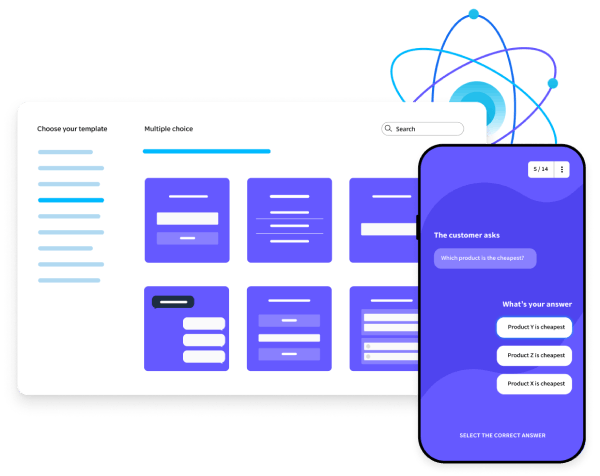
EdApp also houses a range of ready-made OSHA training online courses that you can share with your team as early as today. These courses can even be customized using the creator tool, so you can add any additional content, like some of OSHA’s written programs or your own organization’s safety policies.
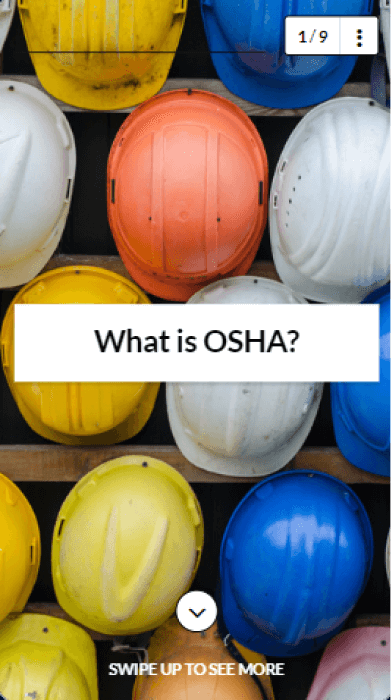
You’ll also benefit greatly from EdApp’s real-time reporting and analytics on your team’s progress and performance. Track individual and group performance, identify areas of improvement, and address any knowledge gaps promptly. This data-driven approach allows for continuous improvement of your training program and secure your business’ annual compliance with OSHA.

Invest in EdApp to create a culture of safety within your organization and protect the well-being of your workforce.
Author
Jen Avelino
Jen is a learning expert at SC Training (formerly EdApp), a mobile-based training platform that helps corporates and businesses bring their training solutions to the next level. She carries an extensive writing experience in a variety of fields, including architecture, the gig economy, and computer software. Outside of work, she enjoys her free time watching her favorite series and documentaries, reading motivational books, and cross-stitching.
